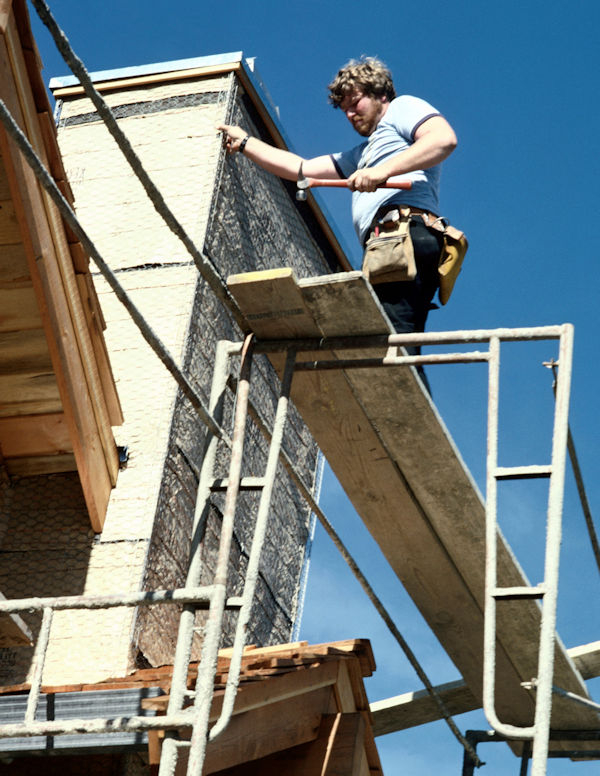Guardrail Systems
Guardrail systems — or guardrails — are barriers erected along an unprotected or exposed side or edge of a walking-working surface to prevent falls. The standard requires employers to protect each employee on a scaffold more than 10 feet (3.1 m) above a lower level from falling to that lower level. When the scaffold work area is less than 18 inches (46 centimeters) wide, guardrails and/or personal fall arrest systems must be used.
- Height: The height of the toprail for scaffolds manufactured and placed in service after January 1, 2000 must be between 38 inches (0.9 meters) and 45 inches (1.2 meters). The height of the toprail for scaffolds manufactured and placed in service before January 1, 2000 can be between 36 inches (0.9 meters) and 45 inches (1.2 meters).
- Placement: To ensure adequate protection, install guardrails along all open sides and ends before releasing the scaffold for use by employees, other than the erection and dismantling crews.
- Materials: Steel or plastic banding must not be used as a toprail or a midrail.
- Strength:
- Guardrail systems must be capable of withstanding, without failure, a force of at least 200 pounds applied in a downward or outward direction at any point within two inches of the top edge of the top rail. The guardrail system must not deflect to a height less than 39 inches.
- Manila or synthetic rope used for top rails must be inspected to ensure that the rope meets the strength requirement.
- Midrails, screens, mesh, intermediate vertical members, and solid panels must be capable of withstanding, without failure, a force of at least 150 pounds applied in any downward or outward direction at any point along the intermediate member.
- Manila or synthetic rope used for midrails must be inspected to ensure that the rope meets the strength requirement.
- Midrails: Midrails must be installed approximately halfway between the toprail and the platform surface. When a crosspoint of crossbracing is used as a midrail, it must be between 20 inches (0.5 meters) and 30 inches (0.8 m) above the work platform.
- Crossbracing: When the crosspoint of crossbracing is used as a toprail, it must be between 38 inches (0.97 m) and 48 inches (1.3 meters) above the work platform.
- Screens and mesh: When used, must extend from the walking-working surface to the top rail and along the entire opening between top-rail supports.
- Intermediate vertical members: Must be installed no more than 19 inches apart.
- Surfaces: Guardrail systems must have smooth surfaces.
- Ends of top rails and midrails: Must not pose a projection hazard.
- Steel or plastic banding: Must not be used for top rails or midrails. Chain or cables can be used when they satisfy all of the guardrail requirements.
- Top rail and midrail dimensions: Must be at least 0.25 inches in diameter or 0.25 inches thick.
- Guardrail systems used at hoist areas: A removable guardrail section, consisting of a top rail and midrail, must be placed across the access opening between guardrail sections when the hoist is not being used. Chains or gates are acceptable if they offer equivalent protection.
- Use of Stilts: Stilts may be used by employees on a large area scaffold. When a guardrail system is used, the guardrail height must be increased in height equal to the height of the stilts.
- Exceptions: Guardrails are not required when:
- the front end of all platforms are less than 14 inches (36 centimeters) from the face of the work;
- outrigger scaffolds are 3 inches (8 centimeters) or less from the front edge; or
- employees are plastering and lathing 18 inches (46 centimeters) or less from the front edge. )
Knowledge Check Choose the best answer for the question.
2-12. Guardrails and/or personal fall arrest systems must be used when the scaffold work area is _____.
You forgot to answer the question!

